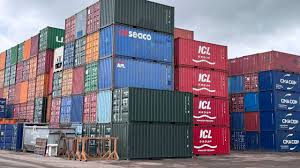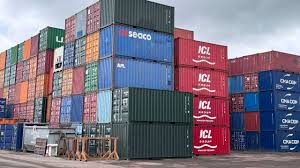Stainless steel is one of the most important and versatile materials in the modern world. Recognized for its corrosion resistance, strength, hygiene, and sleek appearance, stainless steel plays a critical role in nearly every major industry. From cookware and surgical instruments to skyscrapers, bridges, and industrial plants, stainless steel provides the perfect balance of aesthetics and performance.
Its combination of durability, recyclability, and low maintenance makes stainless steel not only a practical choice but also an environmentally responsible one. As industries worldwide continue to demand materials that perform under pressure and stand the test of time, stainless steel remains the gold standard.
What Is Stainless Steel?
At its core, stainless steel is an iron-based alloy that contains a minimum of 10.5% chromium by weight. The chromium forms a thin, invisible layer of chromium oxide on the steel’s surface, which acts as a passive film. This layer prevents rust and corrosion, giving stainless steel its famous resistance to the elements.
In addition to chromium, stainless steel may contain nickel, molybdenum, manganese, nitrogen, titanium, and other elements. These alloying elements enhance specific properties such as toughness, strength, heat resistance, and formability.
Types of Stainless Steel
Stainless steel comes in several families, each tailored to specific performance requirements:
-
Austenitic (e.g., 304, 316): The most widely used type, offering excellent corrosion resistance and formability. Commonly used in kitchen equipment, food processing plants, and medical devices.
-
Ferritic (e.g., 430): Contains little or no nickel, making it more affordable. It has moderate corrosion resistance and is magnetic, often used in appliances and automotive trim.
-
Martensitic (e.g., 410): Known for its hardness and strength, this type is used in cutlery, tools, and turbines. It’s less corrosion-resistant but highly durable.
-
Duplex: A mix of austenitic and ferritic, duplex stainless steel offers higher strength and greater stress corrosion cracking resistance, suitable for marine and oil & gas industries.
-
Precipitation-Hardening (PH): Offers a combination of high strength and corrosion resistance, often used in aerospace, chemical processing, and power plants.
Key Advantages of Stainless Steel
✅ Corrosion and Rust Resistance
Stainless steel’s signature feature is its ability to resist rust, oxidation, and corrosion. Even when exposed to moisture, chemicals, or salt, the protective chromium oxide layer self-repairs if scratched—ensuring a long-lasting, clean appearance and extended service life.
✅ Exceptional Strength and Durability
Stainless steel maintains its strength across a wide temperature range, making it perfect for environments with extreme heat or cold. It also resists mechanical wear, making it suitable for high-load or high-traffic applications.
✅ Hygienic and Easy to Clean
Because stainless steel is non-porous and smooth, bacteria, mold, and contaminants cannot easily penetrate its surface. This makes it ideal for use in food preparation, hospitals, laboratories, and any environment that requires strict sanitation.
✅ Aesthetic Appeal
Stainless steel provides a sleek, modern look that blends seamlessly into both industrial and decorative settings. It can be polished to a mirror-like finish or brushed for a more muted, contemporary appearance.
✅ 100% Recyclable
At the end of its life, stainless steel is fully recyclable without loss of quality. In fact, most stainless steel products today contain a significant percentage of recycled content, reducing the material’s carbon footprint and supporting sustainable development.
Common Applications of Stainless Steel
Stainless steel’s adaptability makes it suitable for an impressive range of applications, from everyday items to complex infrastructure.
🏗️ Construction and Architecture
Stainless steel is widely used in buildings, bridges, public spaces, and even art installations due to its strength, weather resistance, and beauty. Common architectural applications include:
-
Handrails and balustrades
-
Exterior cladding and facades
-
Roof systems and structural beams
-
Bridges, monuments, and public art
🍴 Food and Beverage Industry
Its hygiene, non-reactivity with food, and resistance to corrosion make stainless steel ideal for:
-
Commercial kitchen equipment
-
Food processing plants
-
Brewing and dairy systems
-
Storage tanks, sinks, and utensils
🏥 Medical and Pharmaceutical
Stainless steel is used in surgical tools, hospital equipment, and sterile environments due to its ability to withstand repeated sterilization. Applications include:
-
Surgical instruments and trays
-
Implants and orthopedic devices
-
Cleanroom tables, sinks, and fixtures
🚗 Automotive and Aerospace
In the automotive world, stainless steel is used for:
-
Exhaust systems
-
Chassis and structural components
-
Decorative trim and fasteners
In aerospace, where weight and strength are critical, stainless steel is used in:
-
Engine components
-
Heat shields
-
Airframe assemblies
🏭 Industrial and Chemical Processing
Because of its ability to resist chemicals and high temperatures, stainless steel is vital in:
-
Heat exchangers and condensers
-
Chemical reactors and storage vessels
-
Oil and gas piping systems
-
Marine applications such as shipbuilding and offshore platforms
Conclusion
Stainless steel is much more than just a shiny surface—it’s a workhorse material trusted in some of the world’s most demanding environments. Its blend of durability, hygiene, recyclability, and appearance makes it a key material in sectors ranging from healthcare and food to transportation and energy.
Whether you’re designing a modern kitchen, building a bridge, manufacturing pharmaceutical equipment, or engineering aerospace components, stainless steel offers unmatched performance, longevity, and value.
Choose stainless steel—for beauty, strength, and reliability that lasts a lifetime.



